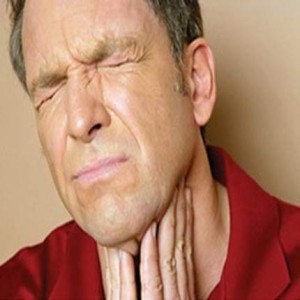What's in this article?
What is Esophageal Spasms?
Normally, contractions of the esophagus (the tube that connects the mouth and the stomach) move food from the mouth to the stomach with a regular, coordinated rhythm.
Esophageal spasm means that contractions of the esophagus are irregular, uncoordinated, and sometimes powerful. This condition may be called diffuse esophageal spasm, or DES. These spasms can prevent food from reaching the stomach. When this happens, the food gets stuck in the esophagus.
Sometimes the squeezing moves down the esophagus in a coordinated way, but it is very strong. This can be called nutcracker esophagus. These contractions move food through the esophagus but can cause severe pain.
Esophageal spasm is not common. Often, symptoms that may suggest esophageal spasm are the result of another condition such as gastroesophageal reflux disease (GERD) or achalasia. Achalasia is a problem with the nervous system in which the muscles of the esophagus and the lower esophageal sphincter (LES) don’t work properly. Anxiety or panic attacks can also cause similar symptoms.
Symptoms of Esophageal Spasms
Signs and symptoms of esophageal spasms can include:
- Squeezing pain in your chest, often intense, which you might mistake for heart pain (angina)
- Difficulty swallowing (dysphagia)
- The feeling that an object is stuck in your throat (globus)
- The return of food and liquids back up your esophagus (regurgitation)

Causes of Esophageal Spasms
The cause of esophageal spasm is unknown. Very hot or very cold foods may trigger an episode in some people.
How is Esophageal Spasms diagnosed?
You may receive the following tests:
- Manometry: Your caregiver will gently insert a tube into your throat and down into your stomach. The tube has sensors on it that measure the pressure in your esophagus. This pressure shows the strength of the spasms when you swallow. The test also shows how well food and fluids move down your esophagus when you swallow.
- Endoscopy: Your caregiver will gently place a scope (long tube with a small camera on the end) into your throat to check for problems with the shape of your esophagus. Your caregiver may also check the thickness of your esophagus. Samples of your esophagus tissue may be taken and sent to a lab for tests.
- X-ray with barium swallow: An x-ray of your abdomen is a picture of your stomach and esophagus. You will drink a thick liquid called barium to help your esophagus and stomach show up better on the x-ray. Follow the instructions from your caregiver before and after the x-ray test.
Treatments for Esophageal Spasms
Treatment options include:
- Botulinum toxin. Botulinum toxin is a poison produced by the bacteria that causes botulism. During an upper GI endoscopy, a small amount of the Botulinum toxin can be injected into the muscle. The Botulinum toxin inhibits acetylcholine release from nerve endings in the muscle which blocks the function of nerves that make the muscle contract. This procedure may need to be repeated over time.
- Drugs to relax the muscles. While medications can help some patients, they are not effective overall.
- Peppermint oil. A small amount mixed in water makes the muscles of the esophagus contract normally again.
- Surgery to cut the muscles along the lower esophagus. This procedure is usually performed only in serious cases that do not respond to other therapy.





